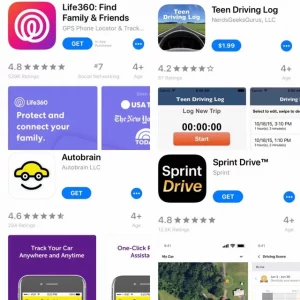Free Case Evaluation
(253) 272-5226Free Case Evaluation
(253) 272-5226As a parent, you might be nervous as your teen approaches driving age. After all, you already know that teens are among the riskiest groups of drivers on the road. The good news is there are a few things you can do to help your teen become a safe driver.
Before handing the keys over, take the time to complete these 7 safety steps.
Teen drivers are at risk for collisions due to their lack of skills and experience behind the wheel. Here are some of the rather sobering statistics:
These statistics are grim to consider. Yet, it’s important to talk about these concerns with your new driver. It’s easy for teens to feel that they are invincible – that bad things won’t happen to them. As adults, we know that’s not true. Your teen needs to know they aren’t immune. They need to understand that their actions can have a huge impact.
The good news is that they can refuse to be another statistic.
Don’t talk about your rules and expectations – get them in writing! Make sure you have a parent-teen driving contract in place before you hand off the keys to the family car.
There are several contracts available that you can customize and print. Here are a few we found:
Parent-Teen Driving Agreement (pdf)
The CDC has this basic, 2-page agreement you can review and print with your teen. It includes straight-forward common-sense rules.
The Checkpoints Parent-Teen Driving Agreement (pdf)
This colorful, one-page agreement has driving rules for teens and parents. There’s also a chart that outlines curfew shifts after several months of safe driving.
Parent-Teen Driving Contract (pdf)
idrivesafely’s contract is 8 pages long – more robust than the other two options we’ve listed.
Of course, you can always create your own parent-teen driving contract. Whatever contract you use, make sure there are clear rules about things like cell phone usage, curfew, and speeding. It’s also a good idea to outline the consequences if your teen breaks the contract.
Thanks to technology, there are several apps for teen drivers available. A driving app can hold your teenage driver accountable and provide you peace of mind.

One app that has particularly solid ratings is:
Life360 (App Store, Google Play; free with in-app purchases)
This is a location-sharing app. You can receive real-time alerts about your teen’s travel. Life360 also tracks your teen’s driving behavior, such as speeding, hard breaking, and cell phone usage.
Take some time to research these and other apps to find the right one for your family.
A big risk factors for teen drivers is having teen passengers in the car. In one study, teens who had passengers in the car were over twice as likely to engage in risky behavior.
Each state has its own rules about passengers for new drivers. Here in the State of Washington, teen drivers can’t have passengers under the age of 20 in the car for the first 6 months (except family members).
Of course, as the parent, you can set your own rules about the number and age of passengers your teen can drive. Some safety experts think that teen drivers shouldn’t have peers in the car for the first year. As this is one of the biggest risk factors for new drivers, impose strong guidelines for your teen.
Research shows that your teen driver’s chances of being in a car crash are greater at night than during the day. Your state may have a curfew for new drivers. In Washington, new drivers can’t be on the road between 1 am – 5pm (except with a licensed driver 25 or older).
Consider making your own curfew that limits your teen’s driving at night. This is most important during your teen’s first year of driving. As your teen proves their ability and gains skill, you can extend the curfew over time.
Reducing distractions in the car means more than putting your teen’s cell phone in the glove box. Anything that takes their eyes off the road can become a distraction.
For instance, you can:
Aim to keep a neat, tidy car for your teen. (Better yet – have them keep it picked up!)
Work to engage your teen in conversations about what it means to be a safe driver. Instead of lecturing or badgering, try for some open-ended questions, such as:
“The other day, I noticed a driver weaving on the road. I’m curious – how would you handle this situation?”
“What’s your favorite route for getting to the mall?”
“Since you’ve been driving, what are some things you’ve seen other drivers do that are unsafe?”
Sometimes the best time to have these kinds of conversations? While you’re in the car with your teen!
While having a teen driver can be nerve-wracking, we hope these tips have offered you some peace of mind! Your teen can become a safe driver. Make sure to read about avoiding collisions with large trucks or planning for a safe road trip.
In spite of doing everything right, sometimes bad things still happen. If you or your teen has been in a crash, please call our experienced car accident lawyers today. We’re happy to discuss what happened at no cost or obligation to you.